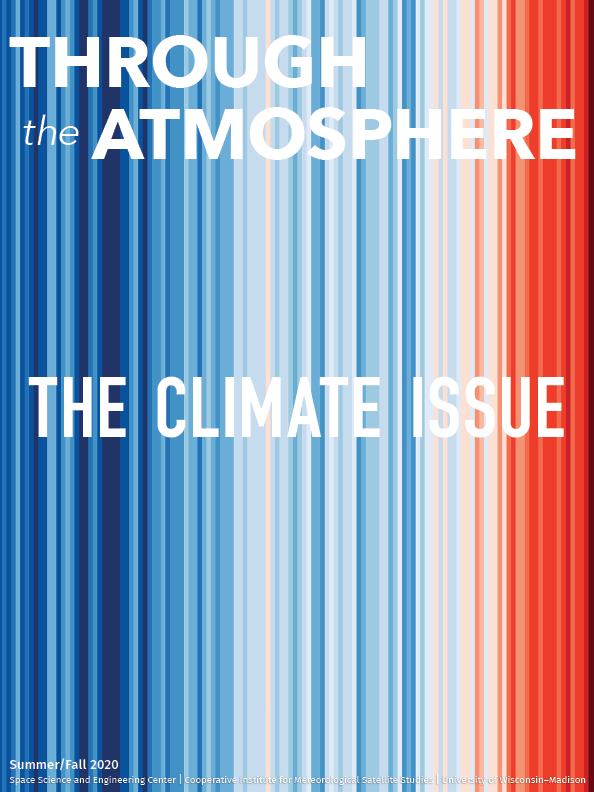Through the Atmosphere Fall 2020, The Climate Issue
The need to understand climate change and how it is shaping our environment is more urgent than ever. The Climate Issue of Through the Atmosphere highlights research at the Space Science and Engineering Center and the Cooperative Institute for Meteorological Satellite Studies that is increasing understanding of our climate and offering paths to solutions.
A recently funded National Science Foundation project, for example, will continue SSEC’s legacy of curating in-situ and satellite observations to provide access to crucial Antarctic climate data to researchers around the world. At the northern pole, ASPB scientist Yinghui Liu’s novel sea ice thickness algorithm demonstrates that changes in thickness have had a greater impact on declining Arctic sea ice volume than sea ice area.

In the warmer tropical regions, NCEI scientist James Kossin demonstrates that hurricane intensity, speed and geographic reach have changed in response to anthropogenic climate change with serious societal consequences. Shane Hubbard’s work translates such findings into actionable information by explicitly linking severe weather — and climate — changes to its societal impacts in order to provide officials and policy makers the tools they need to make informed decisions.
Our stories also celebrate the achievements of aspiring researchers like this year’s Suomi Scholarship winners, Hansi Bartle, Naomi Raicu and Saksen Hathaway, who are embarking on their academic careers seeking to solve environmental and climate problems. Further along in their studies, CIMSS Ph.D. students, Chuck White and Anne Sledd, are already making important contributions to understanding the influence of clouds on climate. Ensuring the pipeline of young researchers remains strong in the future, Alexa Ross and collaborators Margaret Mooney and Scott Lindstrom are creating online educational materials to engage precollege students amid the pandemic.
From senior scientists to promising students, our climate research spans the globe, involving researchers at every stage of their career. These stories, and more, attest to our vigorous climate research programs and illustrate our commitment to training future scientists because our future depends on them.
Read the issue here or download the PDF in magazine format.
Tristan L’Ecuyer
CIMSS Director
Cover image: The “Warming stripes” graphics are a visual representation of the change in global temperatures for the past 100 years. This page features the warming stripes of the United States over the same time period.
Credit: Ed Hawkins (University of Reading) CC by 4.0

